
A French Sikh who appealed the ban on wearing a turban for ID-card photos was denied his right to religious practice by the European Court of Human Rights. While acknowleding that the ban interferes with religious practice, the Court argued that “public safety” overrode accommodation. As a rationale for their ruling, they argued that there was a safety need to photograph individuals without their religious attire and that similar steps have been taken with the hijab.
Every time I read a story like this, it’s hard not to be livid. When the French ban came down, I thought it was unabashedly racist, with an imposition of one mode of attire/appearance privileged and institutionalized over diversity. It’s even more shameful, in my opinion, to have a court whose sole duty is to adjudicate and defend human rights rule against religious accommodation on the basis of xenophobia and misinformation. If a Sikh or a Muslim is walking about in religious attire, how will photographing them without it help you identify them? The real underlying argument is about “hiding” dangerous things in one’s outfit, which is no easier to do than hiding it on your person, and no less offensive.
This brings up two underlying issues for me. The first speaks to the completely disparate meanings we attach to the word “secular” on either side of the Atlantic. Here in the U.S., the idea of “secularism” means the absence of the establishment of a national church or faith. In effect, a very religious country is allowed to have many different expressions of faith co-exist, and for the most part, has been relatively more open about this. In France, “secular” means the expungement of religion from public space (although, of course, this has disproportionate effects for religions that incorporate attire or presentation into one’s practice). When both of these competing ideas exist, I would expect a human rights body to adjudicate on the side of freedom, not on the side of fear.
The underlying argument — that national security (couched in “public safety” here) trumps other principles of expression or practice is not unfamiliar, but it seems so jarringly out of touch with the reality of people’s lives. So what do you do when a rights-based argument fails against a national defense argument? What becomes the forum for legal protection? Are there any legally-rooted places to resort to for communities who pose a large enough minority to bring out reactionary legislation, but not enough to impact political change?
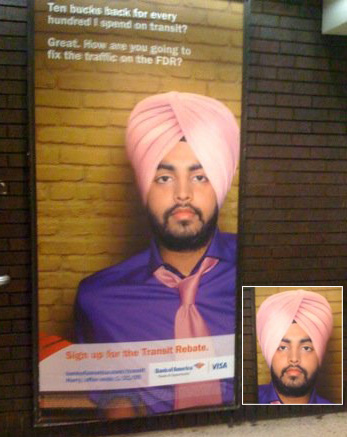 Lookout New Yorkers! There’s a new Sikh in town! Where is he? Who is he? He’s on your subway wall… representing Bank of America, sporting a NICE pagh with the cleanest layers I’ve seen in a long time. It looks like the folks at Kenneth Cole’s might have some competition…
Lookout New Yorkers! There’s a new Sikh in town! Where is he? Who is he? He’s on your subway wall… representing Bank of America, sporting a NICE pagh with the cleanest layers I’ve seen in a long time. It looks like the folks at Kenneth Cole’s might have some competition…
The designers obviously weren’t Sikh because they messed with his pagh and flipped it- maybe to make it look more original. The inset of the picture on the left shows the model with his pagh properly tied – with the larhs (layers) on the right.
Previous discussions of Sikhs in the media, entertainment and modeling:
1. Raising Awareness or A Turban Commodified?
2. Will the Revolution be Televised? Sikhs and the Media
The contents of an email from Tarlochan Singh, a member of the Indian Parliament, to Jagpal Singh Tiwana were published in The Sikh Times recently. 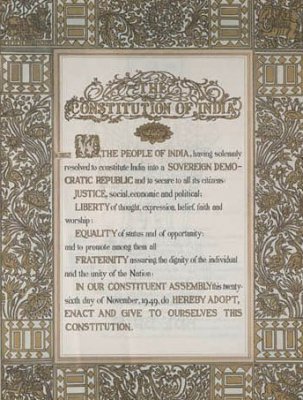 Apparently, the member of Parliament is trying to have the Indian Constitution amended so that Sikhs are no longer referred to as Hindus for the purposes of Article 25 (freedom of religion).
Apparently, the member of Parliament is trying to have the Indian Constitution amended so that Sikhs are no longer referred to as Hindus for the purposes of Article 25 (freedom of religion).
Dear S. Tiwana Ji,
When I became a Member of Parliament I moved a Private Members Bill for an amendment of Section 25 of the Indian Constitution such that the Sikhs are treated as an independent religion. Under the present Constitution Sikhs are regarded as part of the Hindus. So this amendment is required for getting us independent status. My bill came before the House for discussion twice but due to disturbances in the House no proceeding could take place. Now I am waiting for the next opportunity. [The Sikh Times]
Currently, freedom of religion in India’s Constitution (Article 25) reads as follows:
There’s a profile in today’s Toronto Star (and a video online) of the classical Punjabi Sikh family in Canada. Dad came to Canada as young man and goes back to get married. 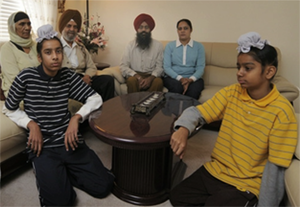 Mom and Dad both have college degrees from India but have limited ability to speak English in a business setting. Living with Dad’s parents, the economic pressures quickly put them into the workforce where they are able to land blue collar jobs at a local car parts factory. There they work with other immigrants, mostly Punjabi with whom they feel comfortable. Business is doing well, they’re able to get good jobs on the factory floor, buy a good house and provide for their children.
Mom and Dad both have college degrees from India but have limited ability to speak English in a business setting. Living with Dad’s parents, the economic pressures quickly put them into the workforce where they are able to land blue collar jobs at a local car parts factory. There they work with other immigrants, mostly Punjabi with whom they feel comfortable. Business is doing well, they’re able to get good jobs on the factory floor, buy a good house and provide for their children.
Then the economy falls apart. Auto sales plummet and parts suppliers can’t stay afloat. They shut plants and layoff workers. All of a sudden Mom and Dad find themselves out of a job with limited transferable skills.
That’s the story of Adarash Pal Singh and Paramjeet Kaur Saini. Both were laid off from Progressive Moulded Products last June and haven’t been able to find employment. To re-skill, both are pursuing further education and Paramjeet just got accepted into Second Career program.
Today is World AIDS Day. The theme of this year’s World AIDS Day is leadership and efforts are focused on prevention. Indeed, on this 20th anniversary of World AIDS Day, President-elect Obama has stated that his administration will focus on prevention and treatment for at-risk communities in the U.S. and rest of the world. World AIDS Day, is the day when organisations from around the world come together to bring attention to the global AIDS epidemic. In 2007, there were 33 million people living with HIV/AIDS. Women account for 50% of all adults living with HIV worldwide and young people (under 25 years old) account for half of all new HIV infections worldwide.

In line with the theme of leadership which is the message of this year’s anniversary, I came across AIDS Jagoo – an effort by Mira Nair and the Bill and Melinda Gates Foundation – to bring together Indian directors and actors to create four short dramatic films that aim to “dismantle myths and misconceptions of HIV/AIDS.” The four AIDS Jagoo films come from various parts of India – each its own genre and with a different point of view on the HIV/AIDS epidemic.
Migration, directed by Mira Nair, discusses HIV/AIDS from an urban/rural angle. Blood Brothers, directed by Vishal Bhardwaj, follows the journey of a young man from a positive HIV diagnosis to the eye-opening conclusion. Prarambha (The Beginning), directed by Santosh Sivan, deals with society’s prejudices against people with AIDS through the journey of a young boy’s search for his mother. Positive, directed by Farhan Akhtar, shows a family coping with AIDS and reveals the courage they bring to overcome the tragedy. Most of the films have subtitles. Hopefully you’ll be able to watch some or all of these and join the global community in remembering those impacted by HIV/AIDS.
It has been over a year since the brutal attack upon Sukhvir Singh, a Sikh taxi driver from Seattle. I previously blogged about the ordeal and Sukhvir’s heroic capacity to forgive. In many ways his move enshrines a message by Guru Nanak from SGGS (p. 223) in Raag Gauri:
Khima Gahi Brath Seel Santokh
Extending forgiveness is the (true) fast, (the true act of) kindness, (the true path of) contentment
However, for the Sikh community in Seattle, the movement did not end there. It seemed to have prompted two Sikh students at the University of Washington, Jay Singh and Paul Bassi, to come up with a project.
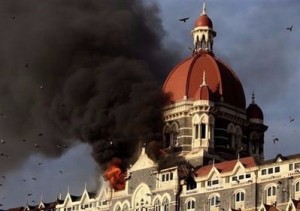 The terrorist attacks in Mumbai — which consisted of blasts in at least seven sites and which apparently targeted Westerners — have, as of this writing, claimed over 110 lives and injured a minimum of 300. Terrorism on this scale has the tendency to engender very common, basic reactions: fear of another attack, concern for those who are at or near the location(s) of the attacks, care for friends or family who may have loved ones affected, disbelief that one set of humans can do this to other humans, and an interest in why the terrorists did what they did. All these elements were present in the wake of 9/11 and the 7/7 bombings, and I believe have been resurrected again with the Mumbai attacks.
The terrorist attacks in Mumbai — which consisted of blasts in at least seven sites and which apparently targeted Westerners — have, as of this writing, claimed over 110 lives and injured a minimum of 300. Terrorism on this scale has the tendency to engender very common, basic reactions: fear of another attack, concern for those who are at or near the location(s) of the attacks, care for friends or family who may have loved ones affected, disbelief that one set of humans can do this to other humans, and an interest in why the terrorists did what they did. All these elements were present in the wake of 9/11 and the 7/7 bombings, and I believe have been resurrected again with the Mumbai attacks.
There is another aspect of a response to mass terrorism that I’d like to discuss in this post: the inclination to unfavorably treat those who share characteristics with or bear resemblance to the terrorists. Following 9/11 and 7/7, Muslims and those perceived to be Muslim were subject to a pervasive and violent backlash. (As we reported earlier this week, Sikhs in America have been profiled in the airport setting.) Accordingly, with news accounts suggesting that the Mumbai terrorists are Muslim, some are worried that Muslims in India may face a wave of public and/or private harassment and discrimination. For example, a colleague who heads a major civil rights organization in America expressed that he was “praying for victims of [the] Mumbai attack[s] and for Muslims in India.”
It should not have to be this way.
Ok, so on Friday, I write this sort of stupid post. It isn’t meant to be taken too seriously so relax (I’m sure many won’t, but oh well).
Last year, my friend sent me this link from craigslist. It was a ‘rant’ but in so many ways it is sooo true.
So here is my question, why is “Every Punjabi Girl’s” post-college apartment the same as “Every Girl‘s”?
List of necessary items:
- Everything ever made from Ikea and Pier 1
- Candles
- Cats
- Pictures on the Fridge
- Papizan chair
Anything missing? What does ‘every Punjabi Guy’s room look like? Basketball posters, swords, what else?
Well have a great Friday as you eat left-over turkey (or tofurkey), watch football, or whatever else you do. Do read the humorous ‘rant’ from a very ‘bitter boy’ if you get a chance. Here’s a look at a different Punjabi girl in a different Punjabi world.

A retelling of Heer Ranjha is set to launch in Glasgow this week, and the screenwriters have done a fascinating job of trying to place the classic love story in a contemporary setting.  Instead of the story of two villagers (Ranjha, who leaves his home and is hired by Heer), it’s the story of a Muslim restaurant worker and a Sikh socialite:
Instead of the story of two villagers (Ranjha, who leaves his home and is hired by Heer), it’s the story of a Muslim restaurant worker and a Sikh socialite:
In a fit of depression, [Ranjha] throws himself off the George VI bridge, presumably choosing that one ahead of the Kingston so that the play can continue. He is pulled out of the Clyde by a boatful of partygoers, led by the beautiful Heer, the fast-living daughter of a Glasgow curry magnate and a Sikh. [link]
And, instead of fully morphing the play, the director discussed his desire to speak directly to the Asian population in Glasgow. He integrates a fully Punjabi story into the framework of life experience for Punjabi Scots, including choosing to play the dialogue in local dialect:
“I had been trying for some time to find a story that would attract Asian audiences [Glasgow’s Asian community is primarily Punjabi] and Heer Ranjha was something I had come across very frequently in my discussions with [local] people,” says Lalitha Rajan, artistic director of Ankur Productions. “I wanted to make it relevant and contemporary and I wanted a writer who had an ear for Glaswegian dialect, because it has its own unique linguistic richness. [link]
I think one of the most striking features of this show the opportunity it takes to speak to, and honor, the interconnectedness of the history of Scotland’s Punjabi community within the artistic/social narrative of the U.K. Instead of the story feeling unfamiliar, exotic, or far, it is re-placed to popularize it among youth in the diaspora. Whether this means it’s more risque or departs dramatically from the original, I’m curious to see how it turns out. If any of our readers are Scotland-based, I would love to hear a review if you’re able to go!
Thanksgiving is a time to reflect and celebrate what we are thankful for, rather than commemorate the manipulative actions of the Pilgrims (yes, in many ways this statement makes me feel better when I have my Thanksgiving meal)!
One of the things I am thankful for this year is Barack Obama’s victory as the 44th President-elect of the United States of America. It has been wonderful to be alive to witness this moment in history. As the saying goes, you can only truly value and appreciate yourself if you can also laugh at yourself. So, I will extend this belief to Barack Obama’s presidential win. So, let’s laugh at this satire on Obama supporters (especially if you were one of them  … I know I did)!
… I know I did)!
Have a good Thanks-Giving!

If you haven’t already come across this link, CNN-IBN is streaming live (though the worst of the violence is definitely over).
streaming live (though the worst of the violence is definitely over).
Even by the standards of terrorism in India, which has suffered a rising number of terrorist attacks this year, the assaults were particularly brazen and dramatically different in their scale and execution. Rarely for India, the attackers specifically targeted sites popular with tourists… Unlike previous attacks in India this year, which consisted of anonymously planted bombs, the assailants on Wednesday night were spectacularly well-armed and confrontational.[IHT]
There are still 5 hostages being held in the Oberoi and operations to rescue them are ongoing.
The latest numbers, according to CNN-IBN say 87 killed, 187 injured. Those are, of course, the official numbers. The IHT says preliminary reports say 240 injured.
If you have family and/or friends in the city, I hope they’re safe.
A Sardar friend of mine once recounted his experiences flying soon after 9/11. He was flying within California to a small Central California city. Upon arriving he had to wait for his plane-side check-in luggage and the air-hostess joked that he was lucky to have flown at all. When he asked why, she told him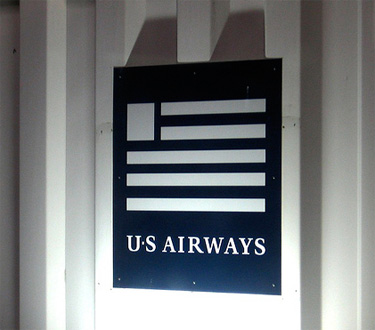 that 2 customers had felt ‘uneasy’ with him on the plane and had they had a third complaint, he would not have been allowed to fly. He asked if he was flying with his three friends, could they report that they felt ‘uneasy’ if they saw a man with a cowboy hat. The air-hostess replied that – that would be a different situation.
that 2 customers had felt ‘uneasy’ with him on the plane and had they had a third complaint, he would not have been allowed to fly. He asked if he was flying with his three friends, could they report that they felt ‘uneasy’ if they saw a man with a cowboy hat. The air-hostess replied that – that would be a different situation.
It seems for 3 “eminent Sikh classical musicians” there situation was not much different than others that flew post 9/11. In a news report that is widely circulating in the Indian press, three Sikh musicians were on board to fly from Sacramento to Salt Lake City on US Airways were asked to deboard the plane after they had cleared proper TSA security clearances, at the whim of the pilot:
The incident occurred after Gulbag, Davinder, and Iqbal Singh cleared Transportation Security Administration (TSA) security and boarded US Airways flight no. 0493 on November 15th in Sacramento, California, on their way to Salt Lake City, Utah. The three were sitting together in the rear of the plane, in their assigned seats. After having been on the plane for approximately ten minutes, they were approached by one of the ticket-reception desk workers and asked to exit the plane. While none of the three adequately comprehend or speak English, the group complied and exited the aircraft. When it became apparent that the group was unable to converse with US Airways representatives, a Panjabi interpreter was called to assist.
Joint Post by Reema and Singh
The Book Club recently commented on the terminology and applicability of the term ‘diaspora’ to the Punjabi community outside Punjab-and whether ‘diaspora’ can apply to a group that won’t be returning to the homeland. For more discussion of the term, check out the Book Club.
We wanted to explore that tangent a little more – the idea of returning to the homeland, and how distant of a reality it actually might be.
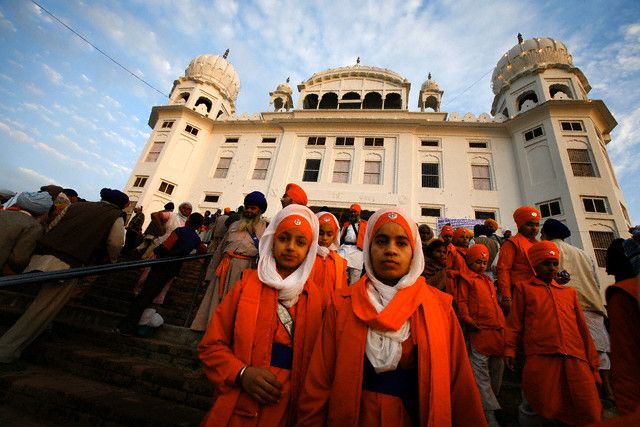
An interesting piece by an Indian-American journalist, who was born in the US and returned to India to write, explores this theme.
It was five years ago that I left America to come live and work in India. Now, in our family and among our Indian-American friends, other children of immigrants are exploring motherland opportunities. The idea is spreading virally through émigré households across the West. [Source]
You might assume that motherland opportunities for foreign-born Sikhs are in the cities – in Bangalore, Mumbai, Delhi, and Chandigarh. And if you’re thinking of business opportunities, that might be true. But Sikhs are drawn to Punjab for a number of reasons: for humanitarian work, community building activities, and unique educational experiences. With a growing number of international organizations like United Sikhs, and in the past Fateh offering opportunities for work and study in Punjab; academies like MiriPiri Academy in Amritsar LINK and Akal Academy at Baru Sahib (in neighboring HP); and foreign universities offer programs tailored to those interested in connected or reconnecting with Punjab – going back to the motherland has become easier than ever.
Last week we actually had a conversation about the book (thanks RT!) and hopefully this week will continue the dialogue. Sorry for the delay in getting this up, airline delays are tough. Here we continue….
———————————————————–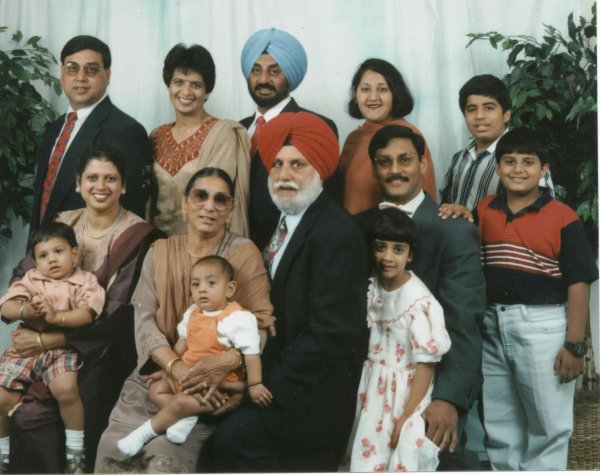
The chapters of this section probably also warrant separate blog posts as we tackle the subjects of Chapter 7 (“Employment and Education” and Chapter 8 (“Family, Gender and Sexuality”). Still time and space constricts us.
Chapter 7 looks at the employment and education profile of the Sikhs in greater detail than previously mentioned in Chapter 3. The authors note that the followers of Guru Nanak have done well in the UK, but by no means are they ‘ethnic high flyers’ (145).
Entering the UK job market as door-to-door tradesmen (Sikh Bhatras of the 1930s/40s) and followed by post WWII unskilled manual labourers, Sikh enclaves formed where employment opportunities were available. First jobs for newly arrived immigrants were facilitated by previously settled kith and kin.
Labour exploitation at the hands of factory managers and even intermediaries from their own community (batoos) helped to propel the labour movements led by the IWAs.
Gotta love Kim Bolan. For years, the Sikh-Canadian community’s favourite journalist has gotten tremendous mileage from the monikers “moderate” and “fundamentalists” that she has used to describe the BC’s Sikh population. Now, in her reporting of the Guru Nanak Sikh Temple’s election, she’s created a new segment of Sikhs: the “orthodox youth”.
Orthodox youth group sweep all executive positions at Surrey Sikh temple (Link)
I guess just saying “youth group” wouldn’t have been malicious enough. That would have brought up images of young underdog activists who chose to actually make a difference in overcoming tremendous odds in beating a slate of grey-bearded (or no-bearded) uncles who have monopolized our institutions.
Instead, she (and the Vancouver Sun) chose to stick a loaded word in front that insinuates a group that’s rigid, backwards and slightly Talibanistic. Yes, I know the word orthodox technically means “Adhering to the accepted or traditional and established faith” but the textbook definition of fundamentalist is someone who has ” a point of view characterized by a return to fundamental principles”, and that’s not how it was used over the past decade to describe observant Sikhs.
I guess Miss Bolan still has a job to do. If Sikhs actually got along and there was no controversy (real or incited), she’d have nothing to write about.
Watch out Aunties and Uncles, the bachey are taking over the gurdwara!
Surrey, BC – In a historic decision by the Sikh Community of British Columbia, the Sikh Youth slate has been elected to the management committee of Gurdwara Sahib Guru Nanak Sikh Temple in Surrey, BC.
The S
ikh Youth slate of Amardeep Singh with 18 Amritdhari GurSikh members, many of them university students who were born and raised in Canada, won by a resounding margin.
In an official statement on thier web site, the Sikh Youth slate stated:
“The members of Guru Nanak Sikh Temple, Surrey, BC have loudly declared their support for ushering in an era of groundbreaking change and reunion in the Sikh Community of British Columbia by electing the Sikh Youth slate to the management committee of one of North America’s largest historic Gurdwaras.
The entire Sikh Youth campaign wishes to express our heartfelt congratulations to the global Sikh community on this historic achievement which will close divides in our community and create new paths for peace and prosperity for our youth. We could not have accomplished this victory without the hard work and dedication of the many volunteers, campaign staff, and the community who supported us throughout.
With the blessings of God and the Guru, we pledge to serve the entire community with honesty, integrity, universal love and a commitment to the truth.” [Thanks for the info Parveen!]
 My Nana Ji (maternal grandfather) often says: “Ja savair da bhulia, shaam noo ghar muriavye, ta oh nu bhulia nehee keheeda”. That if one is lost in the morning, but finds his way home by evening, he’s no longer lost. Hopefully that’s the case with Sikhs and their preservation of history and architecture.
My Nana Ji (maternal grandfather) often says: “Ja savair da bhulia, shaam noo ghar muriavye, ta oh nu bhulia nehee keheeda”. That if one is lost in the morning, but finds his way home by evening, he’s no longer lost. Hopefully that’s the case with Sikhs and their preservation of history and architecture.
Over the years, well-intentioned but individuals kar sewa babas took on the responsibility for the renovation and expansion of Sikh religious institutions across South Asia. Unfortunately, in almost every case, they lacked any expertise in preservation and caused way more harm then good. The result has been, literally, a whitewashing of Gurdwaras. With an “out with the old and in with the new” attitude, old historical structures have been torn down, modified beyond recognition and historical paintings and frescos have been painted or tiled over.
For me the most shocking example of this came from the Baba Atal tower in Amritsar, where hideous green bathroom tiles (that no self-respecting homeowner would ever use) were installed over top of century-old paintings. Here is pic that were sent my way a few years back.
Thankfully, someone has woken up to the fact that bathroom décor isn’t the best way to preserve our history for future generations.
The heritage experts engaged by the SGPC and the district administration have found priceless frescoes from the first floor of Baba Atal, the tallest building of Amritsar, hidden under bathroom tiles put up by Sikh Babas during previous kar sewa.
The art work is exquisite. Most of the art work, hidden during the kar sewa can be retrieved though it requires extra care and expertise. The experts are careful that further damage is not caused while removing marble or bathroom tiles.
Earlier, the SGPC had entrusted kar sewa to the Sikh Babas who had “destroyed” the Sikh heritage, much to the chagrin of experts. Deputy commissioner Kahan Singh Pannu today held a meeting with experts in the Golden Temple complex after monitoring the restoration work of Baba Atal and Ramgarhia Bungas.
Earlier, the kar sewa, carried out to repair age-old murals at Gurdwara Baba Atal, had earned flak from heritage lovers. Interior walls of the first floor were adorned with murals depicting Sikh history. About 100 panels of murals had been left on the first floor of the gurdwara, while the rest of them had been destroyed beyond recognition. Link
This is an area where the Sikh diaspora can have a direct impact. Most kar sewa efforts are highly dependent on dollars and pounds coming in from abroad. Before giving from your dasvand to these causes, please make sure and find out what the project is actually doing. The last thing anyone wants to further devastate the little physical we have left.
I know that we Punjabis love importing our culture and traditions to the countries we now call home, but this is getting ridiculous.
Brampton city councillor Vicky Dhillon is on a crusade to stop stores in his area from selling two kinds of decorative poppy flowers, which he said contain addictive opium.
Dhillon said the flowers and stalks are ground into a brownish powder — called doda — that is openly sold for about $10 for 10 grams at about eight meat stores in his Wards 9 and 10. The powder gets a person high when mixed with water and ingested, he said. “This drug is causing a lot of problems in the community,” said the councillor, adding it’s largely used in the Sikh and Hindu communities. His ridings contain more than 100,000 Sikhs.
Dhillon said he’s concerned the use of doda will spread to area schools due to its low cost. Peel Regional Police raided several businesses two weeks ago that were allegedly selling the drug. One man was arrested and 38 kilos of doda seized. Dhillon said he’s raised his concerns with Peel and Brampton city councils and health officials are looking into the problem.
Several varieties of poppies are allowed into Canada as decorative flowers, but only a few have a high opium content. Dhillon is calling for a ban on sales of two specific poppies — Arizona and Holland. “In the last two years, the use of doda has exploded,” he said yesterday. “This is a big threat to the younger people in our community.” Some of the stores selling the “ornamental flowers” were conducting brisk business yesterday. (Link)
I guess I should not be surprised. If drug use is at epidemic levels in Punjab, its naïve to assume people are going to magically clean up their act when the come to Canada. In fact, the culture shock, isolation and life changes that usually come with immigration, probably only make existing drug dependencies worse.
I was always amazed by the number of “meat shops” in Punjabi communities across Canada. I didn’t think there was enough demand for specialized Punjabi meat products to justify the supply. What I hadn’t taken into account was the “premium products” offered at the back of the store.
On the topic of gurdwara construction, the El Sobrante Gurdwara here in the Bay Area recently had its on-site expansion authorized by the county Planning Commission [link]. The gurdwara is located in unincorporated territory, so it’s not controlled directly by city government, and it’s petitioned for expansion plans to be approved for almost 10 years. For a sense of geography, the gurdwara was the first Bay Area facility for a large (and ever-growing) Sikh community, and it’s located on a relatively large site on the face of a huge hill with residential properties above and a commercial and transit corridor at the foot of the hill.
Gurdwara Sahib, the Sikh Center of San Francisco Bay Area, plans to build a community center, performing arts center, museum and parking garage on its 6.5 acre property off Hillcrest Road in unincorporated El Sobrante.
The expansion would add about 70,000 square feet, not counting the garage, to the existing temple’s roughly 22,000 square feet.
I have my own mixed feelings about the expansion, it’s enormity, and the capacity of the site/land to sustain the traffic and population, particularly during an earthquake. That said, the part of the article that really stuck out to me were complaints from local residents, who have opposed the expansion since its first enlargement in the mid-1990s:
Henderson said the commission failed to address his neighbors’ and other El Sobrante Valley residents’ concerns about traffic, noise and the area’s history of landslides, among other environmental concerns.
He also has said that the temple expansion would obstruct homeowners’ views of the Bay among other aesthetic objections, and has called for a full Environmental Impact Report.
“America has elected a black president but it is still business as usual,” Henderson wrote on Wednesday. The commission “has decided that the reasonable requests of the Quail Hill residents are of no concern. “Could it be because the people most affected are primarily black? [emph. mine]
 I recently came across this article, which notes that the construction on a new Sikh gurdwara in the UK is near completion. The cost for the gurdwara is a staggering £11m, all of which has been financed privately by members of the Sikh community.
I recently came across this article, which notes that the construction on a new Sikh gurdwara in the UK is near completion. The cost for the gurdwara is a staggering £11m, all of which has been financed privately by members of the Sikh community.
The article compelled me to think about the growth of gurdwaras in my corner of the United States, where there are now five major gurdwaras within a radius of about 70 miles. It made me think, more fundamentally, about when, and if so under what circumstances, a gurdwara should be built in the West.
Clearly, there are threshold issues that factor into whether a gurdwara should be built, such as whether there is sufficient sangat to initially support the gurdwara and ensure that it is sustainable in the long-term, whether there is available land that is appropriately zoned and in a convenient location, etc. And clearly there are reasons other than a bursting sangat that are invoked to justify the construction of a new gurdwara, such as management conflicts or ideological differences with those in an existing gurdwara. My attention, however, is fixated on one necessary, but not sufficient, requirement with respect to whether a gurdwara should be built: the “staff,” for lack of a better term.
